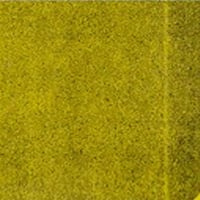Man in Backyard Talks to Orbiting Astronaut Using Homemade Antenna
A Michigan ham radio operator used a homemade setup with a handheld antenna to talk to an astronaut orbiting the Earth on the International Space Station. I didn’t know this was a thing! The astronaut even sent him a QSL card acknowledging the conversation (included at the end of the video). There’s more info on Reddit about the radio, antenna, and conversation.
The ISS even has an unofficial program that allows students to talk to astronauts on the station via ham radio.
An almost-all-volunteer organization called Amateur Radio on the International Space Station, or ARISS, now helps arrange contact between students and astronauts on the space station. Students prepare to ask questions rapid-fire, one after another, into the ham radio microphone for the brief 10-minute window before the space station flies out of range.
“We try to think of ourselves as planting seeds and hoping that we get some mighty oaks to grow,” said Kenneth G. Ransom, the ISS Ham project coordinator at NASA’s Johnson Space Center in Houston.
That this is even possible with low-powered communication devices underscores just how close the ISS is to Earth: 200-250 miles above the surface. That’s the distance between Dallas & Houston or NYC to Boston.





Comments 9
thread
latest
popular
We did a podcast called The Last Soviet about a cosmonaut who went into space and then the Soviet Union crumbled beneath him, and there was no country to bring him down... and one of the things that helped him through it was the friendship he made with an Australian ham radio operator who managed to connect with him. When we released the show, all these ham radio operators reached out to us with their stories... it was pretty wonderful.
So cool. This used to seem impossible to me perhaps because the absolute distance is…so much less than it would seem. DIY earth-space station comms is a storyline early in the Neal Stephenson book Seveneves that sort of sets the table for an epic story that spans thousands of years after the destruction of the moon.
I think my father-in-law was the first person to do this, on his sailboat in a completely empty part of the South Atlantic east of the Falklands, and got quite celebrated for it, even got to meet the Queen in Buckingham Palace.
https://en.wikipedia.org/wiki/Alex_Whitworth
The waving-an-aerial-around methodology makes me think of the very cool Open Weather project, which uses DIY tools to access real-time satellite weather data. Also, I have to recommend Samantha Harvey's 2023 novel Orbital; it's a remarkable, lyrical imagining of the ISS astronaut experience during a typical run of orbits. Watch it with the ISS down-facing camera feed on a big screen.
There's a pretty good discussion about this post on Mastodon, including this post:
Some good comments on Threads too.
I have to share this - sorry it might be a little long - but I haven't thought of it in years. In the 90s I knew a guy through our local astronomy club who shared the results of this mind-bending radio hack he once did to "observe" a meteor shower. His name was John Avallone, and he is pretty well known in amateur telescope making circles. Here's the hack -- meteors ionize the upper atmosphere as they pass through. Radio waves can bounce off the ion trails, so if you were driving down a country road listening to an AM station, you might get an intermittent signal boost - or even momentarily get a blast from a station on the same frequency hundreds of miles away. The night of one of the big meteor showers, he set up a radio (analogue - might not work with digital) tuned to the frequency of one of those big midwest 50,000 watt stations - but locally empty. Nothing but static (unless there was a meteor overhead). And he set up a little monitor to record signal strength fluctuations. He showed us the graphs. As the shower developed, the spikes started to rise. Little blasts of radio from a station over the horizon every time a meteor trail formed. As the night went on they peaked way up off the charts and came much closer together. There were rhythms to it. You could see clearly the peaks and valleys of intensity as the Earth moved through the braids -- streams of heavier and lighter density of particles that are left in wake of the different passes of the comet that is the source of the shower. There were multiple braids - rising and falling of intensity and frequency of the spikes throughout the 24 hours or so he monitored. He was mapping the structure of the comet trails that the Earth was passing through. One of the coolest and most gobsmacking things I've ever seen.
Wow, what a great story! Thanks so much for sharing.
My grandpa was a ham operator: W7WL. His call sign expired with his death in 2008 and has since been transferred to a new individual—which is perhaps an odd form of reincarnation. There's probably more to be said about that, but ...
As a kid, we would go to my grandparents' house, and in the basement, my grandpa had these crazy arrays of equipment. He worked for Tektronix and served in the Canadian Navy as communications officer. There were a few occasions when my grandpa would click on the machinery when us kids were around and I remember two things quite vividly: One, the speed at which my grandpa could tap out Morse code (and receive replies). I suppose it's just another language, but it felt absurd to try to decipher the dots and dashes. Two, a time when he got on the radio to reach out to no one in particular, and ended up having a conversation with someone in Australia. As a kid in Colorado, this felt like magic.
There's a great book about QSL postcards called Hello World: A Life in Ham Radio by Danny Gregory and Paul Sahre.
It is a fascinating world.
Hello! In order to comment or fave, you need to be a current kottke.org member. If you'd like to sign up for a membership to support the site and join the conversation, you can explore your options here.
Existing members can sign in here. If you're a former member, you can renew your membership.
Note: If you are a member and tried to log in, it didn't work, and now you're stuck in a neverending login loop of death, try disabling any ad blockers or extensions that you have installed on your browser...sometimes they can interfere with the Memberful links. Still having trouble? Email me!
In order to comment or fave, you need to be a current kottke.org member. Check out your options for renewal.
This is the name that'll be displayed next to comments you make on kottke.org; your email will not be displayed publicly. I'd encourage you to use your real name (or at least your first name and last initial) but you can also pick something that you go by when you participate in communities online. Choose something durable and reasonably unique (not "Me" or "anon"). Please don't change this often. No impersonation.
Note: I'm letting folks change their display names because the membership service that kottke.org uses collects full names and I thought some people might not want their names displayed publicly here. If it gets abused, I might disable this feature.
If you feel like this comment goes against the grain of the community guidelines or is otherwise inappropriate, please let me know and I will take a look at it.
Hello! In order to leave a comment, you need to be a current kottke.org member. If you'd like to sign up for a membership to support the site and join the conversation, you can explore your options here.
Existing members can sign in here. If you're a former member, you can renew your membership.
Note: If you are a member and tried to log in, it didn't work, and now you're stuck in a neverending login loop of death, try disabling any ad blockers or extensions that you have installed on your browser...sometimes they can interfere with the Memberful links. Still having trouble? Email me!